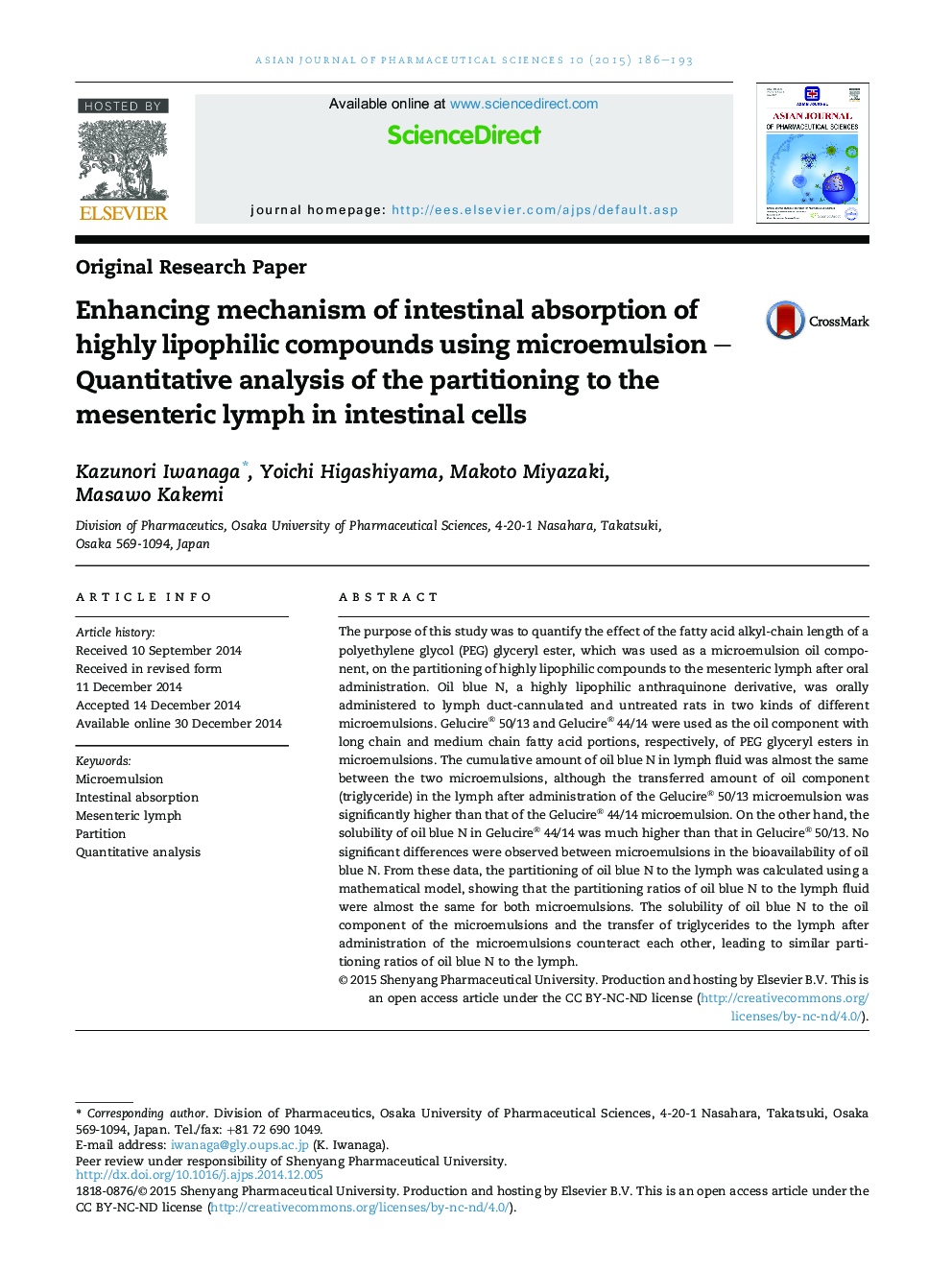| Article ID | Journal | Published Year | Pages | File Type |
|---|---|---|---|---|
| 2498439 | Asian Journal of Pharmaceutical Sciences | 2015 | 8 Pages |
The purpose of this study was to quantify the effect of the fatty acid alkyl-chain length of a polyethylene glycol (PEG) glyceryl ester, which was used as a microemulsion oil component, on the partitioning of highly lipophilic compounds to the mesenteric lymph after oral administration. Oil blue N, a highly lipophilic anthraquinone derivative, was orally administered to lymph duct-cannulated and untreated rats in two kinds of different microemulsions. Gelucire® 50/13 and Gelucire® 44/14 were used as the oil component with long chain and medium chain fatty acid portions, respectively, of PEG glyceryl esters in microemulsions. The cumulative amount of oil blue N in lymph fluid was almost the same between the two microemulsions, although the transferred amount of oil component (triglyceride) in the lymph after administration of the Gelucire® 50/13 microemulsion was significantly higher than that of the Gelucire® 44/14 microemulsion. On the other hand, the solubility of oil blue N in Gelucire® 44/14 was much higher than that in Gelucire® 50/13. No significant differences were observed between microemulsions in the bioavailability of oil blue N. From these data, the partitioning of oil blue N to the lymph was calculated using a mathematical model, showing that the partitioning ratios of oil blue N to the lymph fluid were almost the same for both microemulsions. The solubility of oil blue N to the oil component of the microemulsions and the transfer of triglycerides to the lymph after administration of the microemulsions counteract each other, leading to similar partitioning ratios of oil blue N to the lymph.
